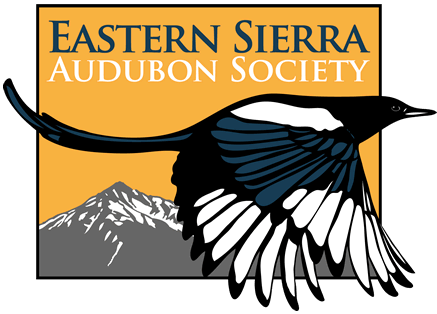by Tom and Jo Heindel
Enjoy a great day of spring birding and celebrate the return of neotropical migrants on the 10th of May! This is the fifth annual international celebration but the first for the Owens Valley. Maryland has been celebrating the return of migrants since 1948 and Illinois, Indiana and Delaware since the seventies. Partners in Flight (PIF), a coalition of more than 12 federal and 50 state government agencies, dozens of universities, more than 20 private organizations such as National Audubon Society and Nature Conservancy, and the forest products industry, have united in an effort to bring all the forces to bear on reversing the decline in migratory bird populations. Scientists are very concerned about neotropical migrants, the more than 200 species that breed in the United States and Canada and then fly south to spend most of the year in Mexico, Central and South America and the Caribbean. Habitat destruction on the breeding grounds, in the wintering areas and along migration routes is the most devastating force facing these songbirds. Deep forest birds have suffered the most because of the practice of clearing virgin forests. Small patches of forests or woodlots may seem like adequate habitat but they afford little protection against predators that destroy eggs and young, or Brown-headed Cowbirds that lay their eggs in the nests of other birds.
Some years the numbers are up slightly and other years are they are down slightly but a line drawn through the average is descending. Rose-breasted Grosbeaks have decreased by more than 40 percent and Blackpoll Warblers by more than 60 percent. These are just two examples from a too lengthy list. Our area used to have much larger numbers of Yellow Warblers, Willow Flycatchers, Yellow-billed Cuckoos, Yellow-breasted Chats, Bank Swallows and Bell’s Vireos. The later hasn’t been seen in the valley since 1976; the others are in trouble here, too. Other familiar bird families that are in jeopardy are orioles, hummingbirds, swallows, thrushes, warblers, vireos and tanagers.
The first celebration of International Migratory Bird Day in Owens Valley will be an effort to take a picture of migration throughout the valley by conducting a day-long bird count. Each of the four major towns in the Owens Valley has organized a team led by a coordinator who assigns interested participants to cover special areas in and around the town. Records are kept on what was seen, where, and in what numbers. The coordinator then compiles the team information and this in turn is added to the data from the other towns. The result is a photograph of what migration looked like on one day during spring migration in the Owens Valley. Over time these snapshots will reveal a bigger picture on the health and well-being, or the lack thereof, of neotropical migrants.
Much is learned from long-term projects such as Christmas Bird Counts, Breeding Bird Surveys, and now International Migratory Bird Day. This day of celebration will be advertised in the Inyo Register so if you would like to share in the joy of birding and at the same time contribute data for an important project call your town coordinator in the evening before 8PM and beat the rush.
Bishop: Jim Parker 872-4447 (all day)
Big Pine: Jo Heindel 938-2764 (after 5 May)
Independence: Leah Kirk 878-2222
Lone Pine: Judy Wickman 876-5202

